Recent Storm Damage Posts
Understanding Summerlin, NV: Common Summer Storms and How to Prepare
6/21/2023 (Permalink)
Located in the heart of Nevada, Summerlin experiences a unique climate characterized by hot summers and mild winters. While known for its sunny days, this region is not exempt from occasional storms that can bring heavy rain, gusty winds, and even flash floods. Understanding the types of storms that commonly occur in Summerlin is essential for residents to stay prepared and mitigate potential damage. In this blog, we will explore the most common summer storms in Summerlin, NV, and provide valuable tips on how to be ready for them.
Monsoon Season: Powerful Thunderstorms and Flash Floods
Summerlin experiences a monsoon season typically between July and August. These monsoonal thunderstorms bring intense bursts of rainfall, strong winds, thunder, and lightning. The rapid accumulation of water can lead to flash floods, especially in low-lying areas. It is essential to monitor weather reports during monsoon season and be prepared for sudden storms and potential flooding.
Dust Storms: Visibility Hazards and Property Damage Risks
The desert environment surrounding Summerlin makes it prone to dust storms, also known as haboobs. These storms are characterized by strong winds that carry massive amounts of dust and debris, causing reduced visibility and potential property damage. To prepare for dust storms, ensure your property is well-maintained, with secure windows and doors. Have a supply of dust masks and be ready to protect valuable items indoors.
Heatwaves: Extreme Temperatures and Increased Fire Risks
Summerlin is no stranger to scorching temperatures during the summer months. Heatwaves are common and can pose health risks, as well as increase the potential for wildfires. Stay informed about heat advisories and take necessary precautions to stay cool, such as staying hydrated, using sun protection, and seeking shade or air-conditioned spaces.
Severe Thunderstorms: High Winds, Hail, and Lightning
While less frequent, severe thunderstorms can occur in Summerlin during the summer months. These storms bring strong winds, heavy rainfall, hail, and frequent lightning. It is important to stay indoors during severe thunderstorms and secure any loose objects outside that may become projectiles in high winds.
Preparation Tips:
Stay informed: Regularly check weather forecasts, warnings, and advisories from reliable sources.
Create an emergency kit: Include essential supplies like water, non-perishable food, flashlights, batteries, and a battery-powered radio.
Secure your property: Trim trees, secure loose items, and ensure windows and doors are properly sealed.
Develop an emergency plan: Establish communication methods, identify safe areas in your home, and discuss evacuation routes if necessary.
Maintain insurance coverage: Review your insurance policies, particularly for flood and wind damage, and ensure you have adequate coverage.
Being aware of the types of storms that commonly occur in Summerlin, NV, and preparing accordingly is vital for residents to protect themselves and their property. By staying informed, taking necessary precautions, and having a well-thought-out emergency plan, you can mitigate the risks associated with summer storms. Remember to prioritize safety, seek professional help when needed, and rely on reputable disaster restoration experts in the event of storm-related damage.
At SERVPRO of Summerlin North/Sun City, we are dedicated to helping Summerlin residents recover from storm damage and restore their homes. Our experienced team is equipped to handle various storm-related restoration needs, providing efficient and reliable services to ensure your property is brought back to its pre-storm condition.
Important Storm Damage Tips
2/8/2023 (Permalink)
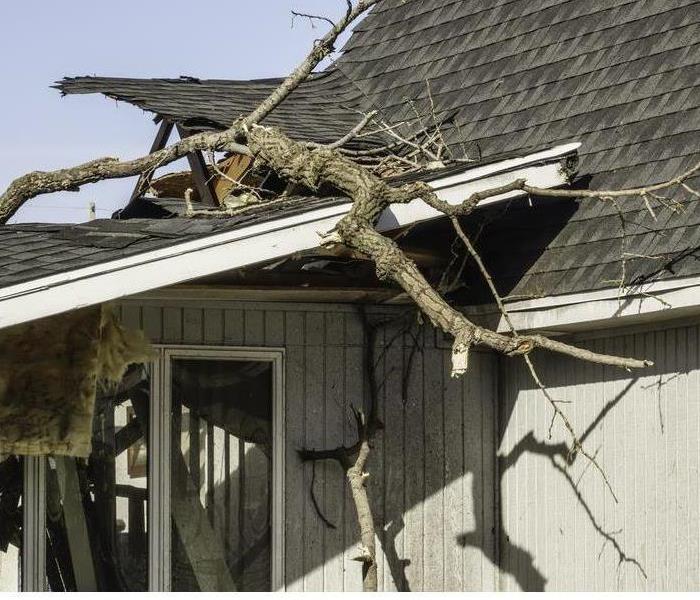 After a storm, give the professionals a call today!
After a storm, give the professionals a call today!
Storms can cause a lot of damage to homes. If you do not know how to recuperate from storm damage, then it is important that you hire a professional. At SERVPRO of Summerlin North/ Sun City, we have been helping people with their home restoration needs for many years. We will make sure that your home is taken care of after a storm and that you are back in your house as soon as possible.
Inspect your home for Damage
After a big storm, it is important to inspect your home for damage. The best way to do this is by doing a thorough walk-through of your property and checking every room. It's also helpful to take pictures of any damage so you can reference them later when claiming insurance or filing claims with the government.
Here are some things you should look for:
- broken windows or doors
- damaged walls, ceilings, or floors (cracks in drywall may indicate that there's been water damage)
- fallen trees/limbs/branches (make sure they haven't damaged anything on the inside of your house)
Check your Homes Exterior
After a storm, it's important to inspect your home’s exterior. This includes checking for missing shingles, damaged or missing gutters, damaged siding and windows and doors. You should also look at roof vents and chimneys to see if they were affected by the storm.
Inspect your Roof
You should inspect your roof to make sure there aren't any missing, broken or loose shingles. Look for discoloration and curling of shingle edges as well. If you find that there's damage to your flashing, this must be repaired before moving on to the next step in the inspection process. If you don't know what flashing is or how it works, ask a professional about this step in the inspection process so that you can properly evaluate and fix any damage that exists in your home.
Also check for missing or damaged gutters because they are an important part of protecting your home from water damage during storms like hurricanes and tropical storms.
Look for fallen trees and limbs
You should also look for trees that have fallen or are leaning toward your home. You will want to check them for stability, and remove any branches or leaves that could be potential fire hazards. Next, you should inspect your roof for damage from falling debris, such as branches and leaves falling from nearby trees. If you see any damage on your roof, it is important to repair this as soon as possible because leaving it unattended could result in further structural breakdowns within the house itself.
Check the interior of your home
Inspect the interior of your home for damage to walls, floors and ceilings. Check for leaks in plumbing or electrical systems and make sure that any damaged parts are repaired before you resume normal use.
Take care of any leaks ASAP
If you notice water coming into your home, it is important to take care of it as soon as possible. Water can cause mold and mildew to grow in your home. If you have any concerns about mold or mildew, call a professional immediately.
If you do not know how to inspect your home after a storm call SERVPRO of Summerlin North/Sun City
If you are unable to inspect your home after a storm, or if you would like someone else to do it for you, call SERVPRO of Summerlin North/Sun City. They are the experts in this area and can help you find out what damage occurred.
They have the experience needed to look for storm damage and know what to do next. If there is any water damage in your home, they will also know how best prevent secondary damages. They have everything needed for their service available at all times including rain gear and boots on hand in case they need them when working outside on your property during inspection.
The most important thing that you can do after a storm is make sure your home is safe and secure, and we hope that these tips will help you do just that. If not, call us at (702) 778-9461 or visit our website for more information about how we can help with your property restoration needs!
3 Necessary Storm Preparation Steps for Property Managers
8/30/2022 (Permalink)
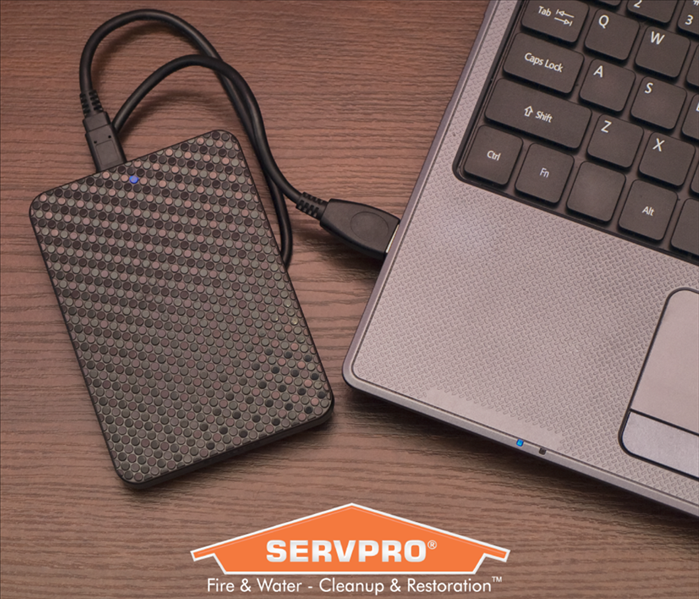 Keep computer files backed up on an external hard drive or cloud.
Keep computer files backed up on an external hard drive or cloud.
Storm Preparedness
A key duty of a property manager is to be ready for severe weather. With storms there is always the possibility of property damage or destruction that may require a professional restoration service to repair, as well as the risk for less serious but still important weather-related setbacks such as power loss. Therefore, it is important to plan ahead for a storm even if one is not forecast. Here are three necessary steps property managers in Summerlin, NV should take for storm preparedness.
1. Create a List of Important Contact Information
One thing property managers should do is create and regularly update a list of important contacts and other information. They need to be able to get in touch with tenants, the insurance company, service providers, staff and general contractors. Before a major storm event, they should check all of the contact information on this list and make sure it is current and accurate. Information they should collect, if available, includes:
- Tenant names, phone numbers, addresses and email addresses
- Names and apartment numbers of elderly people
- Number of tenants, pets and children
- Contractor phone numbers
- Emergency service phone numbers
- Insurance agent phone number and email address
- Staff phone numbers, addresses and email addresses
2. Create an Emergency Plan
Another important step in storm preparedness is developing an emergency plan. This should include role assignments for staff and guidelines for ensuring the safety of the tenants. It should be reviewed with staff and communicated to the renters.
3. Create Backups of Important Files
There is a lot of important paperwork associated with property management. To ensure that this is not lost, back up all files, especially if they are currently in paper format. Even if you already have digital copies of your files, you should still have a second copy of each one stored off-site or in the cloud.
Being on top of storm preparedness can mitigate or even completely prevent disasters. Make sure you have what you need and know what to do ahead of time.
What To Do When a Sump Pump Fails
8/25/2022 (Permalink)
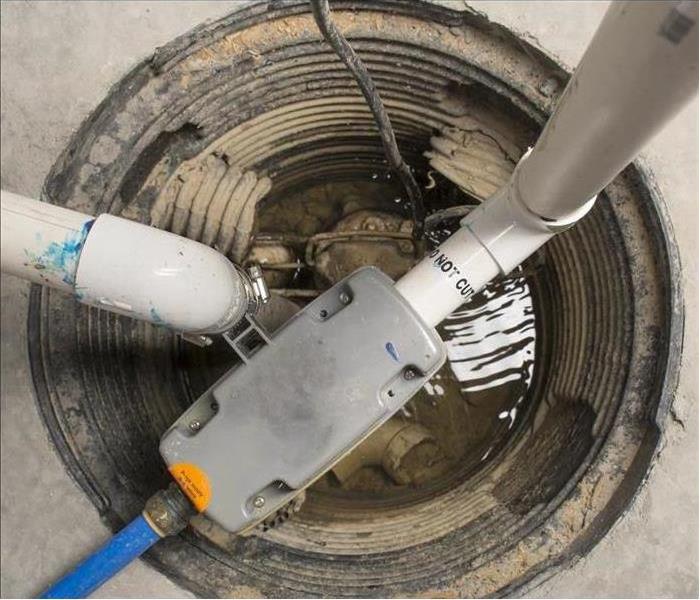 A malfunctioning sump pump can cause a residential basement or crawlspace to flood
A malfunctioning sump pump can cause a residential basement or crawlspace to flood
A malfunctioning sump pump can cause a residential basement or crawlspace to flood. Regularly test the pump at a home in Las Vegas, NV, as it is better to find out that a pump does not work when water is not accumulating on the lowest level of a structure. Here are three steps to take in the event that a pump does not activate or fails to drain water.
Check the Pump Function
The most reliable way to test pump functionality is to run water through the system. Take the following measures to check drainage capabilities:
- Fill the sump pit with water
- Check to see if the float raises
- Make sure the pump activates
A pump that does not activate as the pit fills may have a bad float switch, blown fuse or tripped breaker. Sump pumps should have a primary and backup power source to prevent storm damage in the event of power failure.
Identify Needed Maintenance
If a pump is slow to drain or is not functional, ensure the basin and drain lines are clear. The check valves on sump pumps tend to fail. Test valve function by pushing this component up and down to ensure it moves freely. More advanced maintenance may require a plumber.
Repair or Replace a Sump Pump
A malfunctioning or broken pump may necessitate professional repairs or replacement. With proper pump maintenance, most sump pumps have an operational life of at least 10 years. Depending on your needs, you may want to consider a column, pedestal, or submersible pump.
If a sump pump is in working condition and connected to reliable primary and backup power sources, the risk of failure should be minimal. The pump should automatically activate and drain water that is backing up into a basement or crawlspace. Contact a plumber if backups remain a problem at a residence in Las Vegas, NV.
6 Tips To Prepare Your Business for a Flood
7/23/2022 (Permalink)
 Plan and practice evacuation routes
Plan and practice evacuation routes
Prepare For A Flood
Most people don’t expect to be impacted by a flood or other natural disaster; however, flooding is among the most common in the United States. While you may not want to think about it, preparing for a flood or other type of storm damage should be a top priority. Preparation is key to preventing major damage. Here are six tips to help your Las Vegas, NV, business prepare for a flood.
1. Understand the Level of Risk
Do you know how likely it is for your business to be impacted by a flood? Floods can happen from a variety of water sources including overflows of dams, hurricanes, rain, and snow. Take the time to identify your level of risk based on potential water sources. FEMA has a flood map to help you recognize risks.
2. Practice Evacuation Routes
One of the best things you can do to prepare for flooding is to plan and practice evacuation routes. Educate your employees on your processes and procedures during an emergency. Employee safety should be your main goal.
3. Have an Emergency Supply Kit
It’s also wise to have an emergency supply kit available to take during an evacuation. The supply kit should include basic first aid supplies that may not be immediately available following a disaster.
4. Move Valuables to Higher Ground
Your business has valuable equipment and furniture. If possible, consider moving these items to higher ground to lower the risk of becoming submerged in floodwater.
5. Obtain Flood Insurance
The best time to purchase flood insurance isn’t during an emergency. Most insurance policies take 30 days before they are effective. The National Flood Insurance Program managed by FEMA offers flood insurance to business owners through private insurance companies.
6. Partner With Restoration Experts
Flood damage can be costly and you don’t want to compound the financial loss with a decrease in productivity. The best way to get your business back to full operation quickly is by working with a water restoration company.
Flooding can be devastating physically, financially, and emotionally. By using these tips to prepare your business for a flood, you’ll be able to minimize loss.
Important Tips on Commercial Roof Upkeep
4/21/2022 (Permalink)
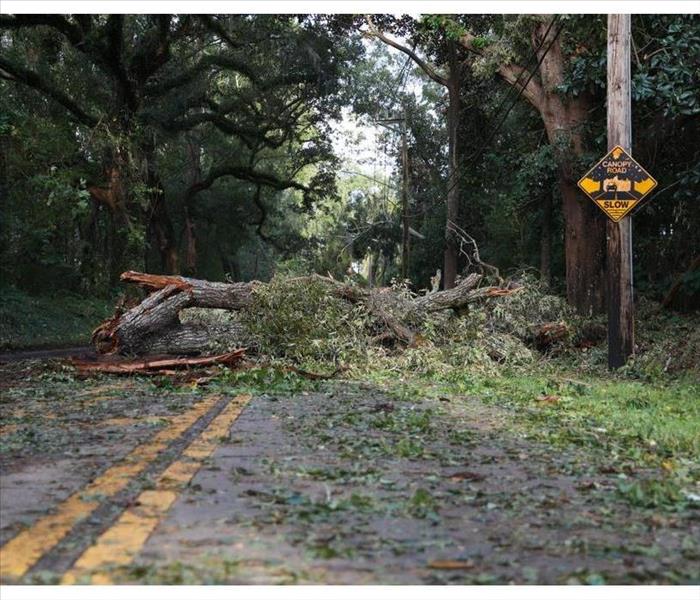 Wind damage is a real possibility.
Wind damage is a real possibility.
If your company experiences roof damage after a powerful storm, it is important to take quick action. A delay could result in additional damage to your facility in Las Vegas, NV. If the harm is major, your building could be vulnerable to another downpour. Therefore, a professional storm restoration company might be needed. A trained crew will arrive quickly and assess the situation. If the building is exposed, they could decide to put a tarp over the roof to prevent more rain from coming in. This will secure the building until more permanent repairs can be undertaken.
The Power of Heavy Winds
The winds from thunderstorms often reach well over 60 miles an hour. Tornadoes and hurricanes easily exceed these speeds, sometimes reaching over 100 miles per hour. Roof damage can include torn shingles, damaged gutters and destroyed flashing systems. These situations can expose your commercial building to several expensive situations:
- Roof leaks
- Flooding
- Standing water
- Saturated support boards
No matter where you are located, wind damage is a real possibility. You can minimize the chances of a failing roof by making necessary repairs as soon as problems are discovered. Eventually, a new roof will be needed as most roofs only last from 20 to 30 years. If possible, it is a good idea to budget for a new roof.
The Benefits of a Roof Rebuild
If there is enough damage after a storm, it could be necessary to rebuild parts of the roofing system. A professional team can accomplish this, strengthening your company for the next storm. When it comes to your roof, you always want to make sure the work is done according to the highest standards. This will protect your business and everything beneath the roof.
When strong storms come, roof damage is a possibility. It is always important to make repairs quickly to prevent more damage and to protect your property.
3 Types of Odors That May Exist After a Home Flood
3/24/2022 (Permalink)
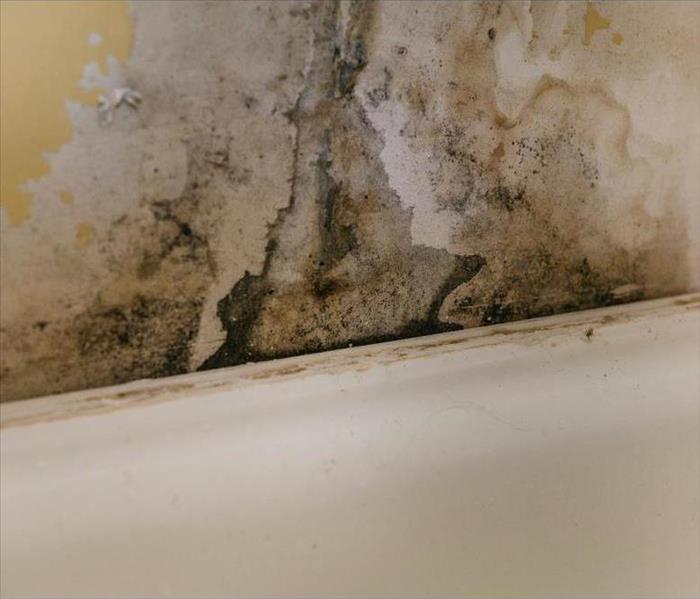 Water can lead to mold damage in your Downtown East, NV home.
Water can lead to mold damage in your Downtown East, NV home.
Three Types of Odors That May Exist After a Home Flood
After a flood at your Downtown East, NV, home, you may be facing a variety of problems. However, one that you may not expect is the odors flooding can create. Mold growth, sewer water and debris can all leave foul smells behind, even after the water is drained away. If you have recently experienced a flood in your home, there are a few ways to sniff out the source of these smells so you can have them eliminated.
1. Musty Smells
After flood water enters your home, it may be absorbed by drywall and other porous building materials. This can cause mold to grow in the interior walls, especially if they contain insulation. Mold can cause a musty, foul odor due to the mycotoxins it can release. In most cases, the stronger the musty smell, the more serious the mold growth invasion.
2. Dirt or Earthy Odors
When outdoor flooding invades your home, it can also bring mud, clay and other types of dirt along with it. Earthy or wormy odors can be left behind in your walls or under carpeting, where they can linger for weeks afterward. Having porous building materials replaced can alleviate this issue. Consider having drywall and molding torn out and the rooms professionally cleaned before any reconstruction takes place.
3. Sewer Smells
Few odors are as unpleasant as those that come from a sewer. If your home experienced a flood due to a sewage loss, the bitter, foul smell could remain long after the water is drained away. Calling in a storm damage and flood restoration service may give you a number of options for removing this smell, from the use of ozone machines to special cleaning techniques that typically cannot be found elsewhere.
Mold growth, dirt and foul sewer smells can make your Downtown East, NV, residence smell unbearable after a flood. Learning where these smells come from and how to eliminate them can restore your happy home.





 24/7 Emergency Service
24/7 Emergency Service





